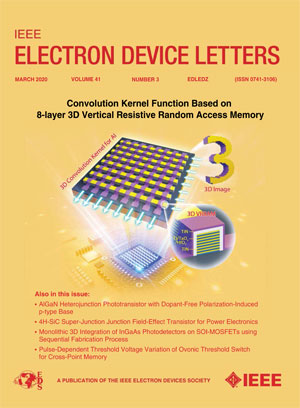Biocompatible and Reusable Synaptic Transistor With Efficient Electron-Ion Dynamic Coupling Interface
IF 4.1
2区 工程技术
Q2 ENGINEERING, ELECTRICAL & ELECTRONIC
引用次数: 0
Abstract
The development of bio-based synaptic transistors faces significant challenges. These arise from conflicting requirements between the hydrophilic ion interface and the polar nature needed for the channel interface. To address this, we introduced modification layers between the channel and bio-based pectin. Specifically, we employed a method that simultaneously regulates hydrophobicity and polarity, thereby optimizing the electron-ion coupling interface. Through a comprehensive analysis of interface polarity and surface energy characteristics, we identified poly(methyl methacrylate) (PMMA) as the optimal modification material. PMMA not only enhances proton permeation but also significantly improves electron transport. Consequently, synaptic transistors incorporating PMMA modification layers demonstrated a marked increase in post-synaptic response intensity. Furthermore, these devices successfully replicated a wide range of complex synaptic functions, including applications such as image display with low-frequency suppression and enhanced contouring. In addition to its performance-enhancing properties, the PMMA modification layer serves as a protective shield, ensuring stable synaptic signal output under mechanical bending conditions for over求助全文
约1分钟内获得全文
求助全文
来源期刊

IEEE Electron Device Letters
工程技术-工程:电子与电气
CiteScore
8.20
自引率
10.20%
发文量
551
审稿时长
1.4 months
期刊介绍:
IEEE Electron Device Letters publishes original and significant contributions relating to the theory, modeling, design, performance and reliability of electron and ion integrated circuit devices and interconnects, involving insulators, metals, organic materials, micro-plasmas, semiconductors, quantum-effect structures, vacuum devices, and emerging materials with applications in bioelectronics, biomedical electronics, computation, communications, displays, microelectromechanics, imaging, micro-actuators, nanoelectronics, optoelectronics, photovoltaics, power ICs and micro-sensors.
 求助内容:
求助内容: 应助结果提醒方式:
应助结果提醒方式:


